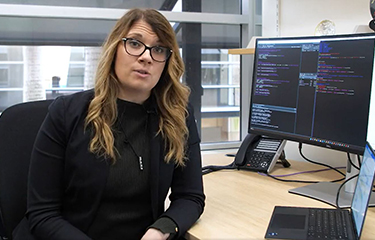An Australian doctoral student recently used artificial intelligence to digitally replicate aquaculture farms, a breakthrough allowing fish-farming companies to test new technology and management strategies before real-world implementation, potentially preventing major financial losses before these companies make large investments.
Jessica Hintzche, a doctoral student within University of Queensland’s Alliance for Agriculture and Food Innovation (QAAFI) program, created digital twins – or simulations of an individual enterprise – of aquaculture farms so that companies can evaluate how new technology or strategies might affect their fish-farming operations in terms of cost-effectiveness and success. They can then weigh potential gains against the costs needed to implement changes before committing themselves to an investment.
“In essence, this model serves as a ‘trial run’ before implementing any changes,” Hintzsche said. “Furthermore, it helps address the challenge of maintaining genetic diversity within a farm’s population when selecting for specific traits by fine-tuning the approach using this digital twin to strike a balance between genetic diversity and selection.”
Specifically, companies can visualize how genetic technology may affect the future populations they’re farming.
“This powerful tool enables me to construct a virtual model of an entire enterprise, spanning from their breeding program to harvest,” Hintzsche said. “It incorporates various aspects such as mortality events at different life stages and the farm's criteria for selecting new breeding program parents.”
Hintzsche is testing this software, which offers customized solutions tailored to individual farms, as opposed to a one-size-fits-all model, on a barramundi farm based in Victoria, Australia.
“I’m going to help them decide which traits to select for based on their current genetic structure while optimizing their progeny for all of their grow-out environments,” Hintzsche said.
Innovative technology, including parental selection, harvesting options, and genetic selection, are continuing to emerge in aquaculture but with slow adoption rates. For example, only 10 percent of globally farmed fish descend from genetically improved strains. The main reason for the slow adoption rate is that these strategies require large upfront costs.
Historically, broodstock selection, which includes mature individuals used in aquaculture operations, has relied on phenotypic traits, such as size, strength, or color, which can lead to inbreeding. Genetic approaches, like the one Hintzsche is helping to implement on the barramundi farm in Victoria, minimize inbreeding and guide the selection of traits toward those lacking obvious phenotypic indicators, such as disease resistance, fillet size, or omega-3 content.
To perform accurate simulations in the AI software, companies gather essential genetic inputs from their farms’ broodstock. From the genomic data, they can determine whether greater genetic diversity is needed or if genetic potential for specific beneficial traits is already present in the population. After making that determination within their current population, fish-farming operations can then simulate genetic makeup over multiple generations, providing predictions of genetic advancements over a desired timeframe. This approach allows a farm to assess potential genetic improvements and profitability of current strategies compared to possible experimentation with different approaches.
“Additionally, what makes a digital twin different from a normal simulation is that the farm doesn’t have to pick one thing to try differently; we can model any and all changes the farm may want to make simultaneously, using real-time data from their specific farm,” Hintzsche said. “We can also model all environments covered by the farm, even if they use a combination of indoor RAS systems and outdoor brackish ponds. They are a digital replica of a farm; no two twins will look the same.”
Digital farms are not a new concept, as they are already prevalent technology used for terrestrial systems, such as on cow and wheat farms, for instance, but have yet to be applied to the aquaculture sector. Hintzsche believes that the unique intricacies of each aquaculture farm makes this type of technology essential to …
Photo courtesy of QAAFI








